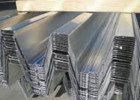Product Details
Tophat Purlins
Tophat Purlins are a versatile, lightweight, economical and an easy to use product for roof purlins, wall girts, floor joists, and many of other applications such as carports, fencing, racking and many more. Ideally for spans from 3m to 7m, Tophat P...
Product Description
Tophat Purlins are a versatile, lightweight, economical and an easy to use product for roof purlins, wall girts, floor joists, and many of other applications such as carports, fencing, racking and many more.
Ideally for spans from 3m to 7m, Tophat Purlins will provide an economical alternative to standard timber beams or Steel C-Purlins.
Tophat Purlins are very easy to work with, being fastened directly to their supports which results in a saving on cleats. The symmetrical section means no braces or nogs are needed to prevent twisting and the profile is easily lapped for optimal performance.
DURABILITY
Tophat Purlins are manufactured from hot dipped galvanised steel with a coating weight of 275gram/sqm, in line with other common lightweight steel structural building products.
This gives good protection in most exposed internal environments, and for external use in moderate marine environments. Where used in a lined interior dwelling, a thermal break should be installed between the Tophat and the cladding to avoid thermal bridging. Where sections are exposed to salt spray but not rain washing, maintenance is required to remove any build up of salt deposits on the surface.
Run off from, or contact with, materials which are incompatible with zinc should be avoided.
HANDLING AND STORAGE
Tophat Purlins must be kept dry during storage as water present between close stacked sections will cause premature corrosion. If they become wet they should be separated and stacked openly to allow for ventilation to dry the surface.
LENGTHS
Tophat Purlins are available in long run lengths up to 12 metres, depending on the available transport and handling facilities. Stock lengths may be available from your local stockist.
CUTTING
Cutting is preferably done by shear or hacksaw. When using abrasive disc blades care must be taken to ensure the swarf produced does not affect other materials and the burred edge should be cleaned off at the completion of cutting.


